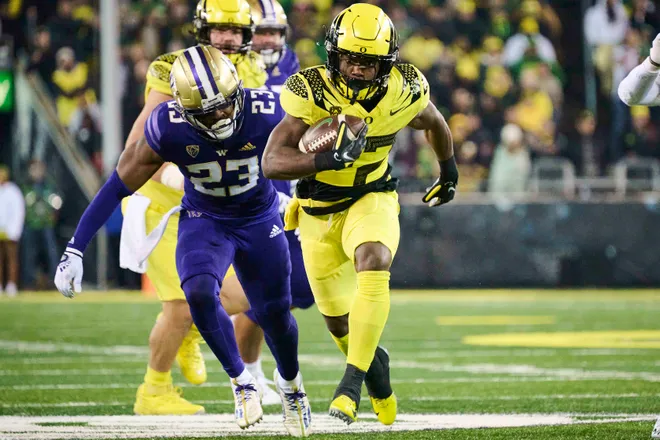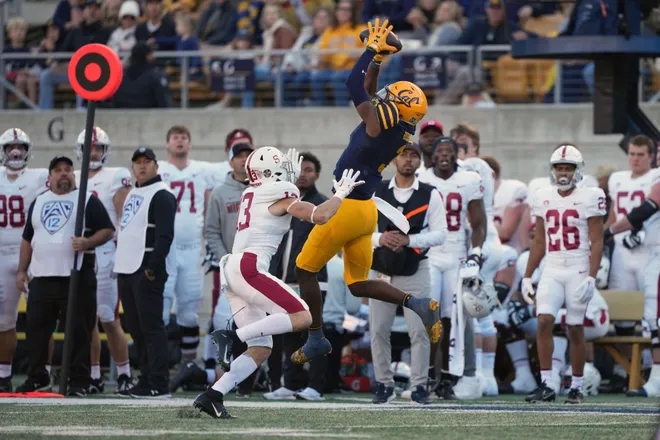Big Ten, Big 12 conference realignment has thrown college sports for a loop. What's next?
Decades of tradition were tossed aside in a matter of days. Two conferences, the Big Ten and Big 12, expanded. Another, the Pac-12, stands on the verge of collapse.
There is a sense of unease in college sports over what may come next. Is there another round, two rounds, three rounds of conference expansion and realignment in the near future?
There are also feelings of disappointment and resentment over the way television partners have inserted themselves into this debate. Driven in part by these media partners, conference and university administrators have abandoned common-sense arguments against realignment and left serious questions unanswered about the future of high-level college athletics.
Here's what we know about these landscape-shifting moves and what might come next:
Why did the Big Ten do this now?
Think of it like this: You're at the supermarket with a full cart on your way to the checkout line. You've hit all the items on your list and feel good about where things stand. But as you get in line, you see a deal that seems too good to be true – two half-priced bags of potato chips, and one of your favorite brands, too. Sure, the chips aren't your favorite flavor, and you already have two bags of your preferred chips in your cart. But how can you turn down such a great deal when you're clearly in the mood for chips?
For the Big Ten, adding Oregon and Washington is not just about continuing the westward expansion that began with last year's addition of UCLA and Southern California for the 2024 season. The Ducks and Huskies are expected to join the Big Ten and receive roughly half of the annual media-rights payout given to the rest of the conference, with small escalators every year until the Big Ten's current contracts with CBS, Fox and NBC conclude in 2030. That deal was and is too good to pass up.

There is a consensus that the two former Pac-12 schools would've remained part of the conference had its commissioner George Kliavkoff been able to land a meaningful media-rights deal. Instead, the proposed subscription-based model with Apple failed to move the needle, with Arizona president Robert C. Robbins likening the agreement to "selling candy bars for Little League or Girl Scout cookies”
So the Big Ten swooped in with a financial offering that even at a discounted rate would exceed what Pac-12 members expected to receive from Apple. Oregon and Washington couldn't say no.
LEFT OUT: The five biggest snubs in the preseason rankings
OVER-RATED: Five teams in the preseason poll ranked too high
BREAKDOWN: Preseason outlooks for every preseason Top 25 team
What happens to the Pac-12?
Despite the league's diminished stature among the Power Five, the Pac-12 brand remains so strong that it seems ripe to continue in some form or another even without the members who have left for greener pastures: Oregon, UCLA, USC and Washington for the Big Ten, and Arizona, Arizona State, Colorado and Utah for the Big 12.
There are two ways to stave off the dissolution of a league that has existed for over a century:
- Expand. Look to the Mountain West and elsewhere for schools hungry for an upgrade in reputation and notoriety. Several high-profile schools, such as Boise State and San Diego State, have publicly angled for Pac-12 membership in the past and may remain interested despite last week's losses. Buyouts for MWC schools drop following the 2024-25 season.
- Merge. Instead of trying to draw teams from the Mountain West, the Pac-12 could pitch a merger and create a reimagined West Coast conference.
Again, though, these steps come down to dollars and cents. What can the Pac-12 offer in terms of membership that would atrract television dollars that could make them competitive with bigger leagues?
What happens to the Pac-4?
The last four standing in the Pac-12 are California, Oregon State, Stanford and Washington State.
California and Stanford are in better position to land in another Power Five league. Both schools can offer the Bay Area market to broadcast partners and a slew of successful non-mainstream sports that would fit comfortably in the Big Ten or ACC, for example. That the two schools have sterling academic reputations also doesn't hurt.
But California's athletics department carries a massive amount of debt driven in part by annual interest payments on recent stadium refurbishments, which could be an issue.
As dire as the situation may be for the Golden Bears and Cardinal, there will be no Power Five lifelines thrown at Oregon State and Washington State.

What will the SEC and ACC do?
While the ACC could be in the market for expansion, the league could be occupied by efforts to keep current members such as Florida State in the fold.
Last week, FSU president Rick McCullough said the school would have to considering leaving the ACC without “radical change to the revenue distribution.” Translated, that means: We want more money on an annual basis than Syracuse, for one example, so fork it over.
As it currently stands, ACC members are locked into a long-term rights deal through 2036 with annual payouts due to be dwarfed by the Big Ten and SEC.
To leave the conference, a member would have to pay a nine-figure exit fee equal to three times its annual revenue and negotiate an agreement with the ACC to allow its games in the new conference to be televised.
But if premier ACC teams can become dislodged from this contract, the SEC will be waiting. The league will add Oklahoma and Texas next summer, bringing its membership to 16 schools. The SEC isn't interested in the expansion options currently available, but that would quickly change if FSU, Clemson or Miami hit the market.
Where does this leave Notre Dame?
Notre Dame is in the same position as always: independent and happy. Will recent developments force the school's hand after decades and decades without any conference affiliation?
Make no mistake: Notre Dame would be the biggest acquisition in realignment history.
The two main factors that would drive the school to consider leaving independent status behind are finances and the ability to play for the national championship. From a broadcast-partner perspective, Notre Dame's contract with NBC expires in 2024. But incoming athletics director Pete Bevacqua was previously the chairman of NBC Sports, increasing the likelihood the school re-signs with the network at a higher annual rate.
And when it comes to competing for championships, Notre Dame is one of the most obvious beneficiaries of the 12-team College Football Playoff bracket set to debut in 2024.
Speaking of the playoff ...
What happens to the College Football Playoff?
Last week's conference moves are expected to bring changes to the projected playoff format. As established, the 12-team model guaranteed spots for the top six conference champions, ensuring at least one Group of Five participant, with the remaining six spots going to at-large bids.
That will be altered given the dissolution of the Pac-12 as a Power Five league. While there are a few ways the playoff's Board of Managers could go, these two options are the most realistic:
- Go with five automatic spots and seven at-large bids. This would be the easiest way to maintain the established 12-team format, which was almost universally applauded by Power Five and Group of Five administrators.
- Just pick the dozen "best" teams. This would clearly be the preference of leagues such as the SEC or Big Ten, which in a given year might put three or four teams into the playoff. But this would represent a notable step back from the more inclusive model found in the previous format.
Realignment won't prevent the broader change to the 12-team playoff. But the details and minutiae of the model may be impacted dramatically.
NCAAF BETTING GUIDE:How to bet on college football in 2023

Disclaimer: The copyright of this article belongs to the original author. Reposting this article is solely for the purpose of information dissemination and does not constitute any investment advice. If there is any infringement, please contact us immediately. We will make corrections or deletions as necessary. Thank you.







